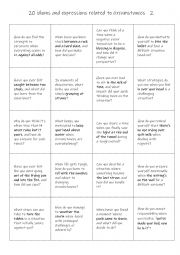
|
B1+-C1 Circumstance idioms and expressions 2
This is a speaking reinforcement activity to supplement the other worksheet I uploaded earlier this year. Students working in pairs or small groups can either ask each other the questions or answer the question themselves.
Level: intermediate
Age: 12-100
Type:
Downloads: 121
|
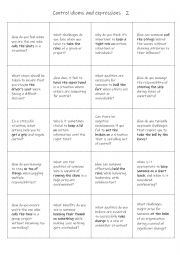
|
B1+-C1 In control idioms and expressions 2
This is a speaking reinforcement activity to supplement the other worksheet I uploaded earlier this year. Students working in pairs or small groups can either ask each other the questions or answer the question themselves.
Level: intermediate
Age: 12-100
Type:
Downloads: 121
|
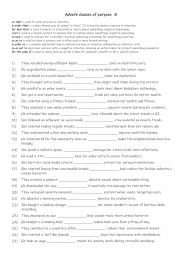
|
A2+-B1 9 adverb clauses of purpose 4
First, students need to familiarise themselves with the 9 adverbs and check their meaning. Then they read the sentences to see which one is needed to complete the sentence. Each word is used 3 times! Answers on page 2.
Level: elementary
Age: 9-100
Type:
Downloads: 121
|
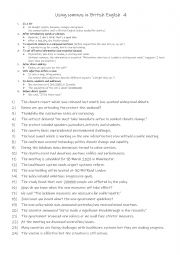
|
Using commas in British English 4
First, students need to familiarise themselves with the 8 reasons why a comma is used. Then they read the sentences and punctuate them accordingly. Answers on page 2.
Level: elementary
Age: 8-100
Type:
Downloads: 121
|
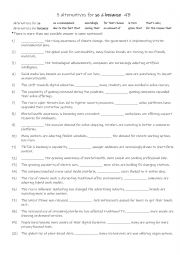
|
5 alternatives for both so & because 4B
First, students need to familiarise themselves with the 10 words and check their meaning and use. Then they read the sentences to see which one is needed to complete the sentence. Each word is used 2 times! Answers on page 2.
Level: elementary
Age: 8-100
Type:
Downloads: 121
|
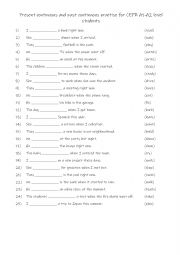
|
Present continuous and past continuous practise
Present continuous and past continuous practise for CEFR A1-A2 level students. Students read the sentences and look for key words to see if the given verb needs to be present or past formation. Answers are on page 2.
Level: elementary
Age: 10-100
Type:
Downloads: 120
|
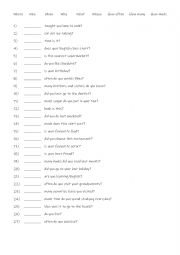
|
What is the question?
Students read the questions to see / work out which of the 9 given question words is needed to complete the question. After completing this exercise, students in pairs or small groups could use this worksheet for a speaking reinforcement activity. Answers on page 2.
Level: elementary
Age: 9-100
Type: worksheet
Downloads: 120
|
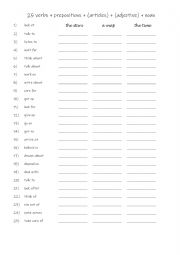
|
Collocations - 25 verbs + prepositions + (articles) + (adjective) + noun
Overall, mastering verbs + prepositions (and related word combinations) can significantly improve your language skills, making you a more effective communicator in both spoken and written contexts.Using collocations correctly makes your language sound more natural and fluent. Native speakers often use specific combinations of verbs, prepositions, a...
Level: intermediate
Age: 10-100
Type:
Downloads: 120
|
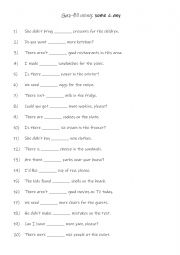
|
Gap-fill using: some & any
Students read the sentences and complete the gap-fill with the correct quantifier. This worksheet is suitable for A1-A2 students. Answers on page 2
Level: elementary
Age: 8-100
Type: worksheet
Downloads: 120
|
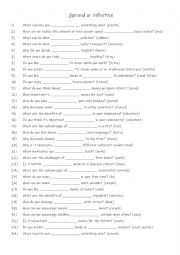
|
B1-B2 Gerund or infinitive practise
Students read the sentences and complete them with either the gerund or infinitive form. Answers on page 2.
Level: intermediate
Age: 10-100
Type:
Downloads: 120
|












